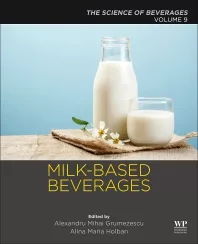How to maximize your holiday merchandising
Wirtz Beverage Group executive details tips for a successful holiday merchandise display
It’s that time of year where homes and businesses get in the holiday spirit with decorations, festive music and tasty treats. The consumer packaged goods (CPG) market is no stranger to this holiday inspiration including limited-edition products and packaging. However, adding these seasonal items to a retailer’s merchandising plans adds a special consideration during this time of year.
Mark Switaj, vice president of training and development at Wirtz Beverage Group, Chicago, shared with Beverage Industry some important tips that retailers should consider during the holiday season.
BI: The holiday season results in a number specialty products and packages for the CPG business, particularly beverages. How can these specialty items help retailers?
MS: During the holidays, consumers purchase beverage products to share at gatherings and to give as gifts. They look for the brands they know and love but they also seek out specialty items because, many times, they provide an added value such as glassware or a flask. These packaged items are generally comparatively priced to standalone product so it’s very appealing to the consumer. Quality seasonal options satisfy consumer demand and can help drive retailer sales.
BI: Given the number of SKUS that accompany these specialty items, what are some best practice tips for merchandising these items?
MS: Successfully merchandising these items is all about timing and location. Start early and set aside a section of your stores for a large display to attract early-bird shoppers. Put the display in an area where consumers don’t feel rushed. The configuration of gift boxes means they usually don’t fit well on shelves, so we recommend grouping items together on tables or specially-made displays. Checkout counters are also a great location because they allow for impulse purchases. Research shows that about 10 percent of consumer purchasing is impulse. That means [that] if they have $100 in their pocket, $10 of that expendable income may go to your well-merchandised specialty items.
BI: What results can retailers expect to see when applying these guidelines?
MS: Merchandising significantly influences buying and can help to drive traffic and ultimately profit.
Everyone is fighting for that discretionary dollar. If you get your items on the floor early enough, offer a good selection and advertise properly, you have a good shot at influencing consumer decisions.
BI: Where are the best places in the store to merchandise these specialty items (e.g. in a holiday display at the front of the store, with other category items, with cross-promotional items, in a holiday or seasonal section, etc.)? Why?
MS: Keep in mind that a lot of alcohol beverage purchases are last minute. Before the holidays, get creative. Try putting displays in walk-in beer coolers alongside popular products like Bailey’s, Fireball or Korbel. Consumers are going to parties, and specialty items make for great gifts.
In grocery stores, position displays in the sections of stores that historically are shopped most, such as produce, seafood/delicatessen, bakery, floral and dairy. Small displays in these areas will help push the sale.
Finally, we always recommend utilizing your digital footprint in advance of your promotion. Share what specialty holiday items you are selling and where in the store you can find them on your website, in email communication and on social media. More and more shoppers are doing their research before going into a store. Capitalize on that opportunity and inform early.
BI: How can these specialty items support/complement a retailer’s existing portfolio?
MS: Specialty items provide consumers more options. Buying behavior and brand loyalty remain, but if a shopper is going to buy Jack Daniels, for example, they may likely purchase the special holiday version with product and souvenir glasses, if equally or fairly priced. It’s about capitalizing on brand loyalty while creating interest and value for the consumer.
BI: What are some challenges that retailers must consider when it comes to activation of these seasonal displays? How can they avoid these challenges?
MS: For a retailer, the toughest challenge is how to determine supply and demand. Under-buying can cost you business, and over-buying can leave you with items that are hard to store and less desirable the following year. Take a look at your best sellers and consumer buying behaviors and consult your distributor. Wirtz Beverage has an entire team dedicated to helping retailer partners make the sale by providing insight and support.
Mark Switaj oversees both the strategy and implementation of a unified corporate training and leadership development initiative throughout Wirtz Beverage. He has been instrumental in developing the best and brightest throughout the Wirtz Beverage Group affiliates nationwide, helping to integrate his colleagues’ talents across the company’s many platforms. In addition to training programs for each of the company’s state distributorships, Switaj also works to implement best-practice techniques and leadership development initiatives.
Looking for a reprint of this article?
From high-res PDFs to custom plaques, order your copy today!






